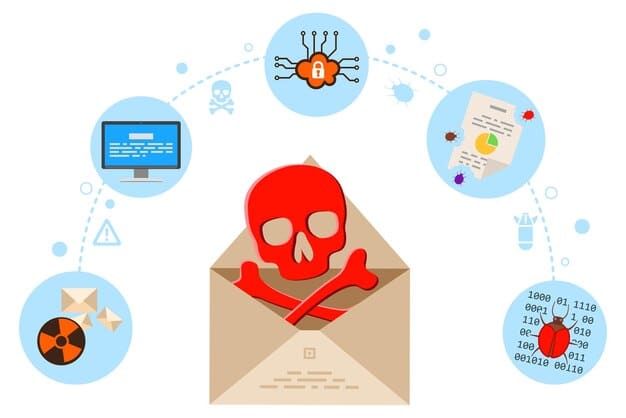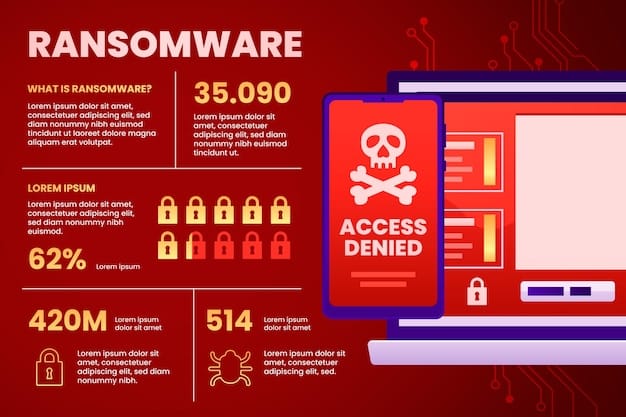Reduce Phishing Success by 40% with Multi-Factor Authentication

Multi-factor authentication (MFA) significantly reduces the success rate of phishing attacks by adding extra layers of security beyond just a password, making it substantially harder for attackers to gain unauthorized access even if they obtain a user’s credentials.
In today’s digital landscape, phishing attacks remain a persistent and evolving threat to individuals and organizations alike. Implementing multi-factor authentication (MFA) is a highly effective strategy to mitigate these risks, and this guide will explore in detail how to reduce phishing attack success rate by 40% with multi-factor authentication: a cybersecurity guide.
Understanding the Phishing Threat Landscape
Phishing attacks are a type of cybercrime where attackers attempt to deceive individuals into revealing sensitive information such as usernames, passwords, and credit card details. These attacks can take many forms, from deceptive emails and fraudulent websites to SMS messages (smishing) and even voice calls (vishing). Understanding the diverse methods employed by cybercriminals is the first step in bolstering defenses.
Common Phishing Techniques
Phishing techniques are constantly evolving, making it crucial to stay informed about the latest trends. Some of the most common methods include:
- Spear Phishing: Highly targeted attacks aimed at specific individuals or organizations.
- Whaling: Phishing attacks targeting high-profile executives or individuals with access to sensitive data.
- Clone Phishing: Attackers use previously delivered emails by copying them and replacing links or attachments with malicious ones.
The Impact of Successful Phishing Attacks
The consequences of successful phishing attacks can be devastating, ranging from financial losses and data breaches to reputational damage and legal liabilities. Organizations that fall victim to phishing attacks may experience significant disruptions to their operations and face substantial recovery costs.

The Power of Multi-Factor Authentication (MFA)
Multi-factor authentication adds an extra layer of security to the authentication process by requiring users to provide two or more verification factors to gain access to an account or system. This means that even if attackers manage to steal a user’s password, they will still need to provide an additional factor, such as a code generated by a mobile app or a biometric scan, to successfully authenticate.
How MFA Works
MFA works by combining different types of authentication factors, typically categorized as:
- Something you know: A password or PIN.
- Something you have: A smartphone, security token, or smart card.
- Something you are: A fingerprint, facial recognition scan, or voiceprint.
Benefits of Implementing MFA
Implementing MFA offers numerous benefits, including:
- Reduced Risk of Phishing Attacks: MFA significantly reduces the likelihood of successful phishing attacks by making it harder for attackers to compromise user accounts.
- Enhanced Security Posture: MFA strengthens overall security posture of the organization by adding an additional layer of protection against unauthorized access.
- Compliance with Regulatory Requirements: Many industries are required to implement MFA, due to regulations.
MFA provides robust security against credential-based attacks, significantly enhancing overall cybersecurity.
Implementing MFA to Reduce Phishing Attack Success Rate
Implementing MFA is not just a technical change, it’s a comprehensive strategy that involves planning, communication, and ongoing monitoring. A well-executed MFA implementation will drastically minimize the risk of phishing attacks and safeguard sensitive data.
Assessing Your Organization’s Needs
Before implementing MFA, it’s essential to assess your organization’s specific needs and requirements. This involves identifying critical assets, evaluating existing security controls, and determining the most appropriate MFA methods for different user groups and applications.
- Evaluate existing risk
- Determine MFA methods applicable
Choosing the Right MFA Methods
When selecting MFA methods, consider factors such as:
- Ease of Use: Choose methods that are user-friendly and do not create unnecessary friction for users.
- Security Strength: Select methods that provide robust security against various attack vectors.
- Cost-Effectiveness: Balance security needs with budgetary constraints to find cost-effective solutions.
Selecting the best MFA method requires careful evaluation of security needs and user experience.
User Education and Awareness
Even with the best technical defenses in place, human error can still lead to successful phishing attacks. User education and awareness programs are crucial for empowering employees to recognize and report phishing attempts.
Training Programs
Incorporate regular training sessions to educate users about phishing tactics, social engineering techniques, and best practices for identifying and reporting suspicious emails or messages. Simulating phishing attacks can be a highly effective way to test users’ awareness and reinforce training messages.
Promote a Security-First Culture
Establishing a security-first culture is promoting a mindset, and encourages users to prioritize security in all their daily activities. Provide users with clear communication channels and reporting mechanisms for escalating security concerns.
Educating users is important for a sustainable MFA implementation.

Monitoring and Continuous Improvement
The cybersecurity landscape is constantly evolving, so it’s essential to monitor the effectiveness of your phishing prevention strategies and make adjustments as needed. Regularly review incident reports, analyze attack patterns, and update security policies to stay ahead of emerging threats.
Incident Response Planning
Develop a comprehensive incident response plan to outline the steps to take in the event of a successful phishing attack or security breach. This plan should include procedures for containing the incident, investigating the cause, notifying affected parties, and restoring systems and data.
An incident plan is important to reduce impact on business.
Regular Security Assessments
Conduct regular security assessments and penetration testing to identify vulnerabilities and weaknesses in your systems and security controls. Use the results of these assessments to prioritize remediation efforts and improve your overall security posture.
Regular assessments ensure that the plan is effective and is always up-to-date.
Measuring the Success of MFA Implementation
To determine the effectiveness of your MFA implementation, it’s essential to track key metrics and measure the impact on phishing attack success rates. By monitoring these metrics, you can gain valuable insights into the strengths and weaknesses of your security defenses and make data-driven decisions to optimize your strategies.
- Phishing Simulation Results: Track the number of users who fall victim to simulated phishing attacks before and after implementing MFA. A significant decrease in the number of successful phishing attempts indicates that MFA is effectively blocking attackers.
- User Adoption Rates: Monitor the percentage of users who have enabled MFA on their accounts. Higher adoption rates typically correlate with greater security coverage and reduced risk of compromise.
| Key Point | Brief Description |
|---|---|
| 🛡️ MFA Implementation | Deploy multi-factor authentication across all platforms. |
| 🚨 User Awareness | Educate users to recognize and report phishing attempts. |
| 📊 Monitoring | Continuously monitor for suspicious activities to prevent any attacks. |
| 🔒 Incident Response | Develop an incident response plan to mitigate and respond to attacks. |
FAQ
▼
MFA adds an extra layer of security by requiring users to provide multiple verification factors. Even if a phisher steals a password, they still need another factor, such as a code from a mobile app, making unauthorized access more difficult to achieve.
▼
Some common MFA methods include SMS codes, authenticator apps, hardware tokens, and biometric verification. Each method provides an additional layer of authentication beyond just a password, enhancing overall security.
▼
While MFA implementation can vary in complexity, many solutions offer user-friendly setups. Most modern platforms support MFA, and IT departments can streamline the process with centralized management and detailed guides to its users.
▼
Advanced phishing attacks may attempt to bypass MFA, but they are less common and require sophisticated techniques. Properly implemented and monitored MFA significantly reduces the attack surface and drastically minimizes the risk of successful phishing.
▼
MFA methods should be reviewed at least annually, or more frequently if there are changes in threats or technology. Regular assessments ensure the MFA remains effective and provides adequate protection against evolving phishing tactics.
Conclusion
By understanding the phishing threat landscape, implementing robust MFA practices, educating users, monitoring effectiveness, and measuring success, organizations can significantly reduce the risk of falling victim to these attacks. Embracing a proactive and comprehensive approach to cybersecurity is essential for protecting sensitive data and maintaining a secure digital environment.





